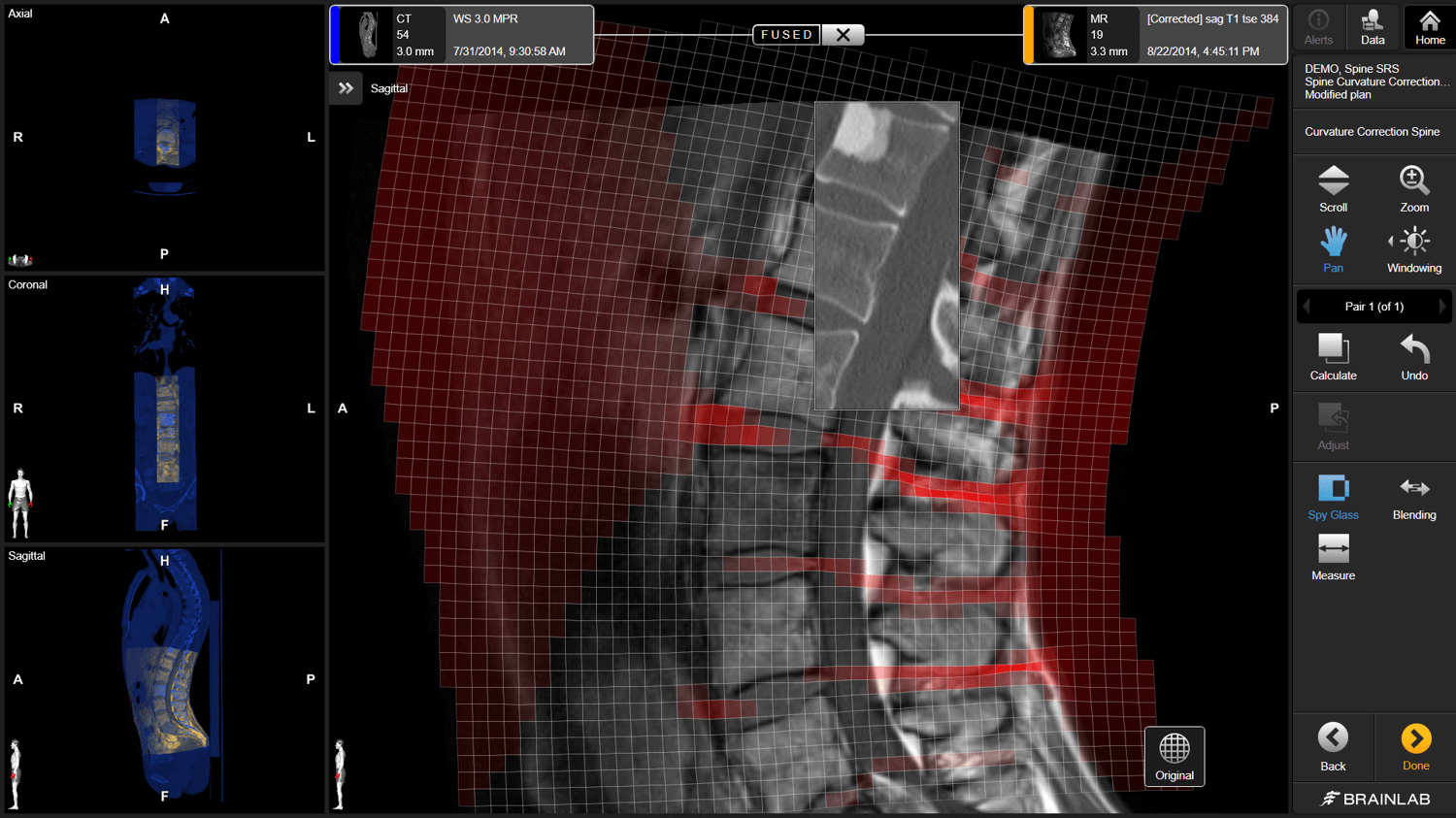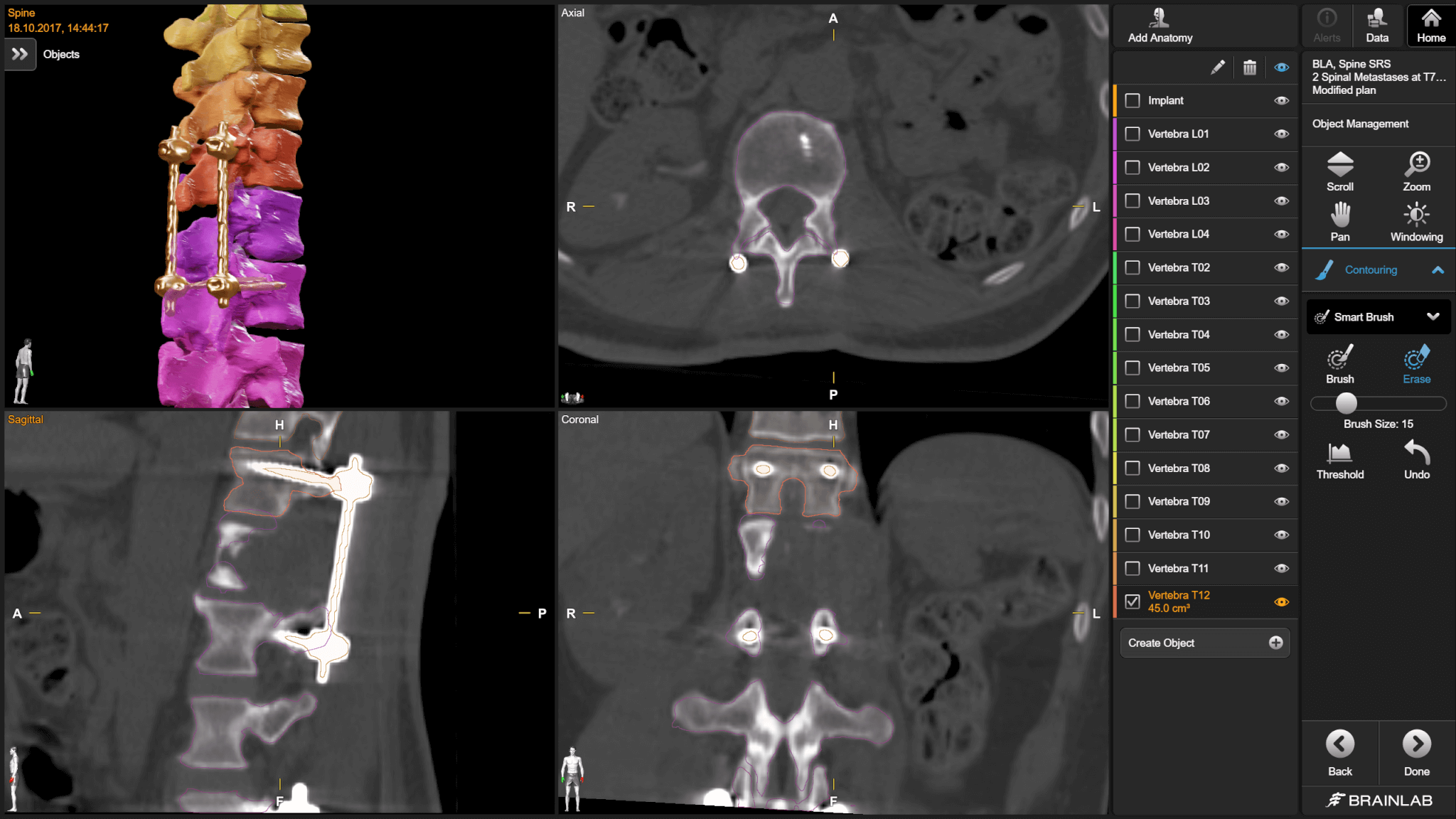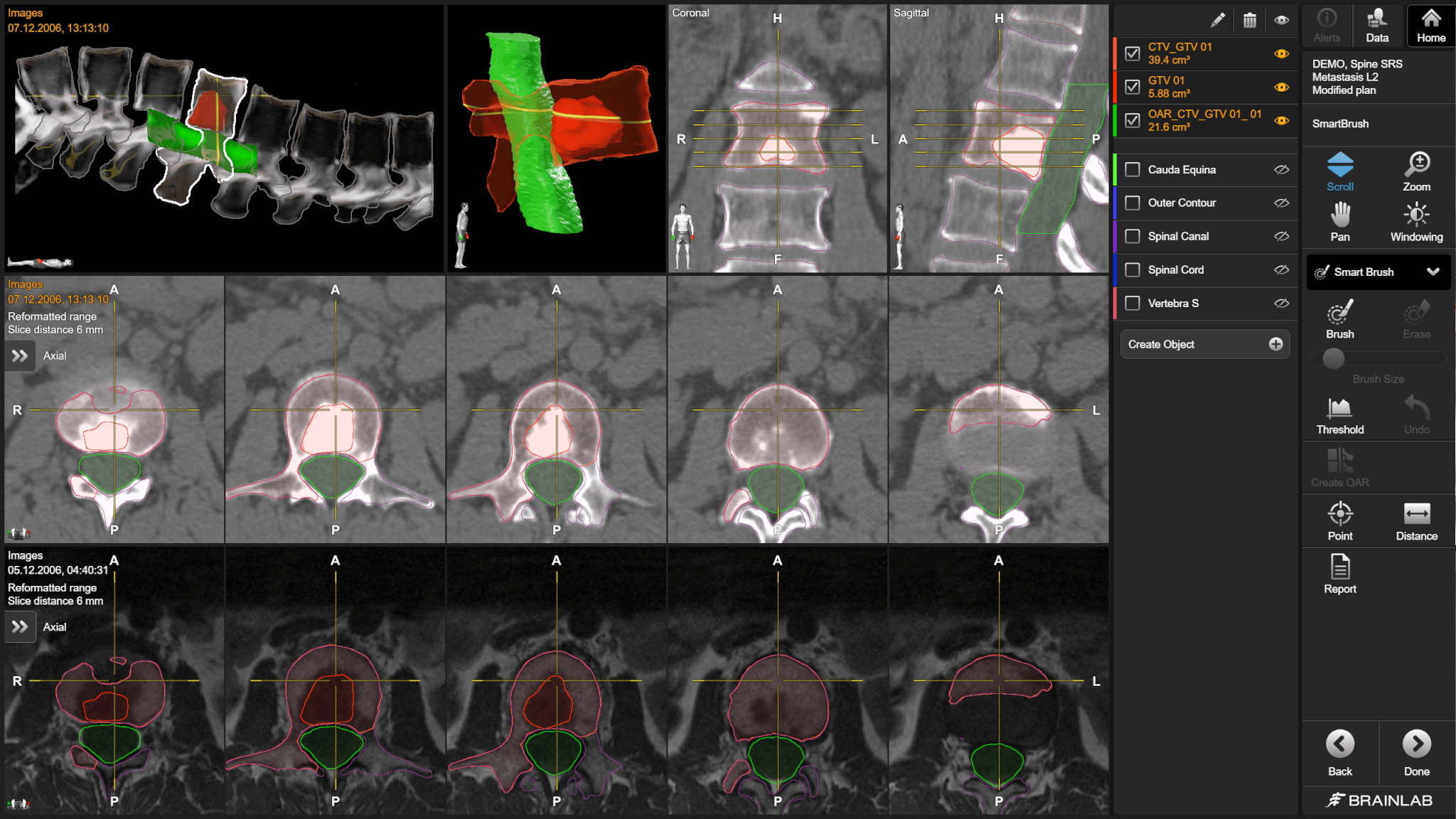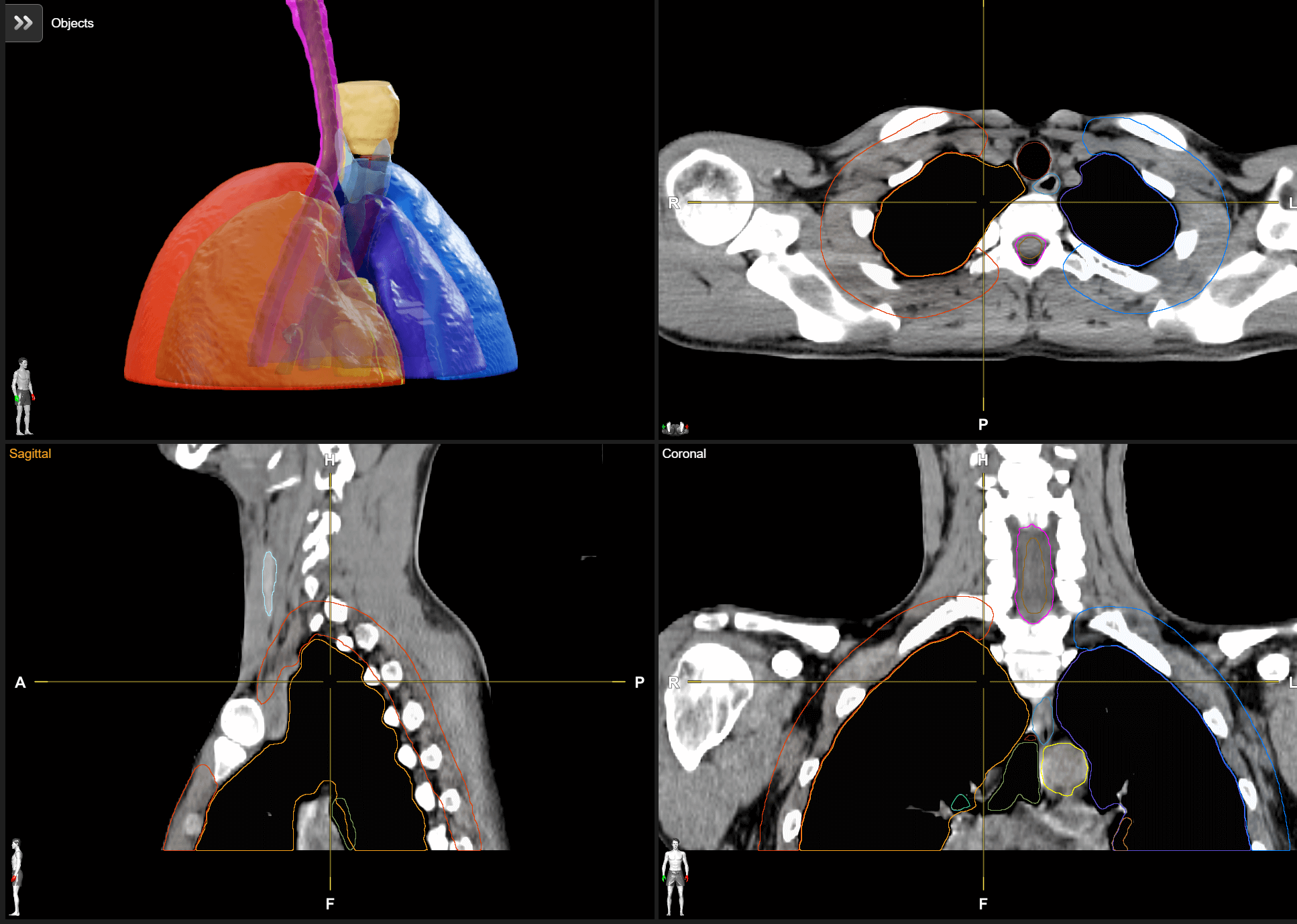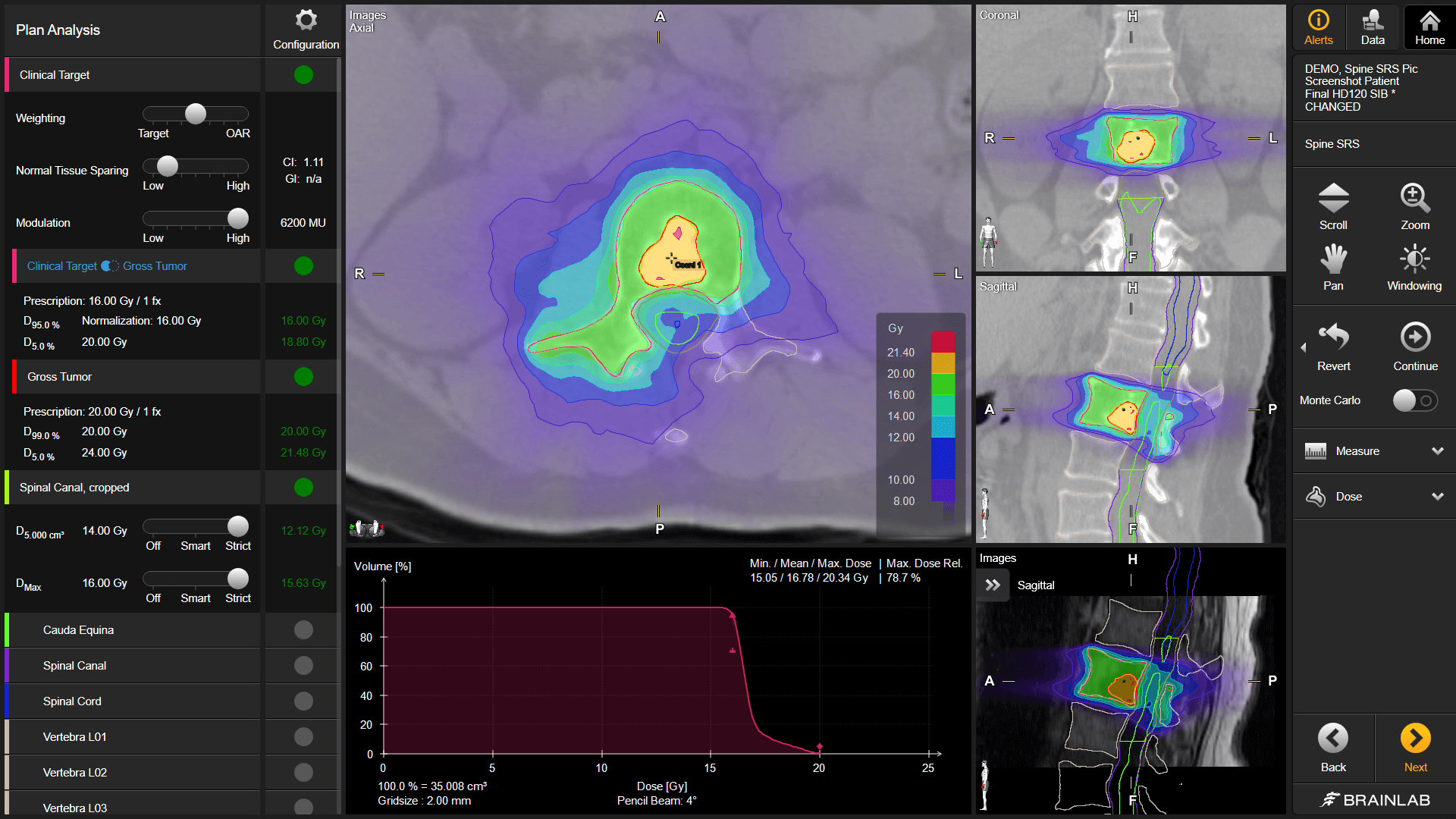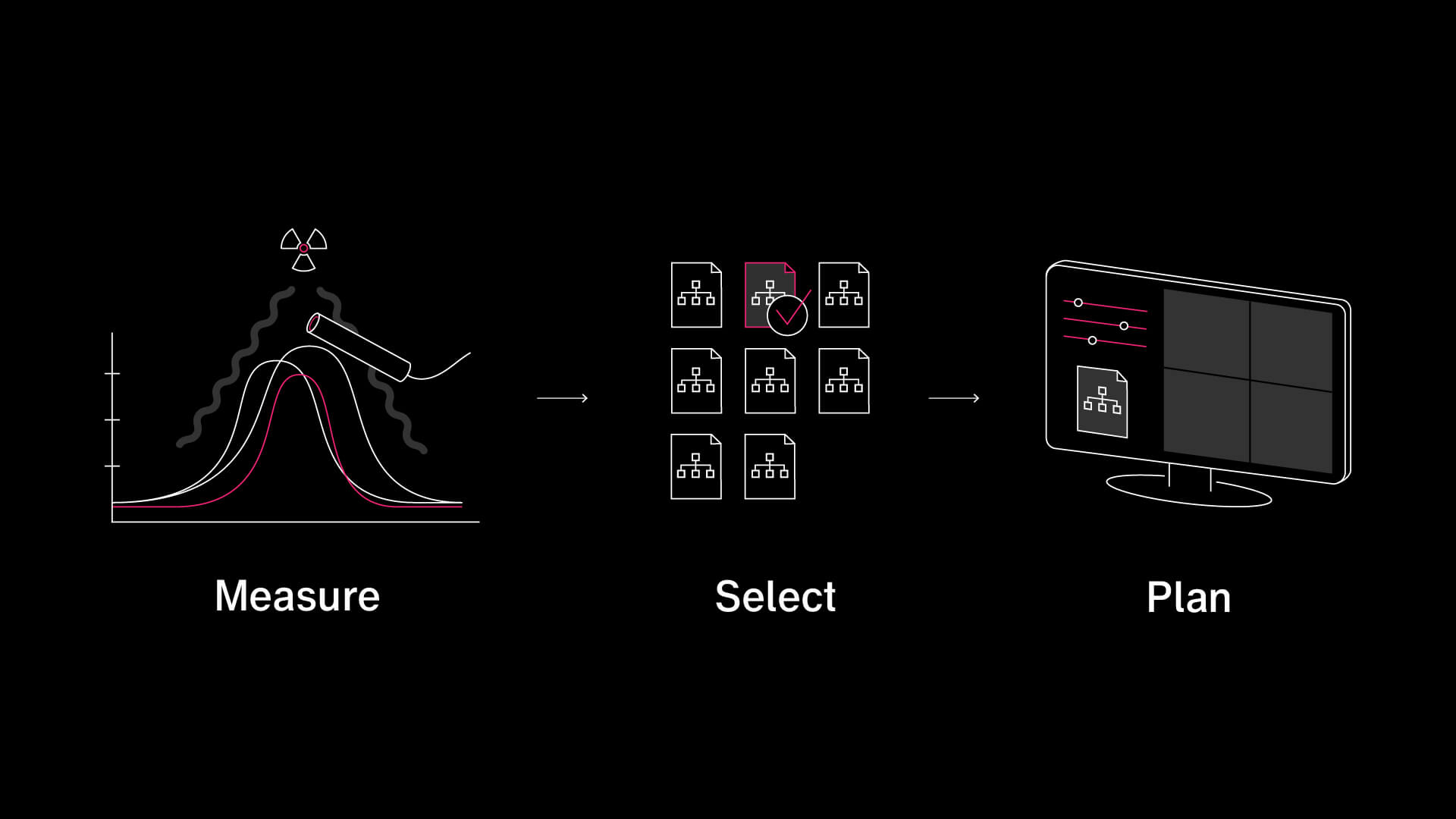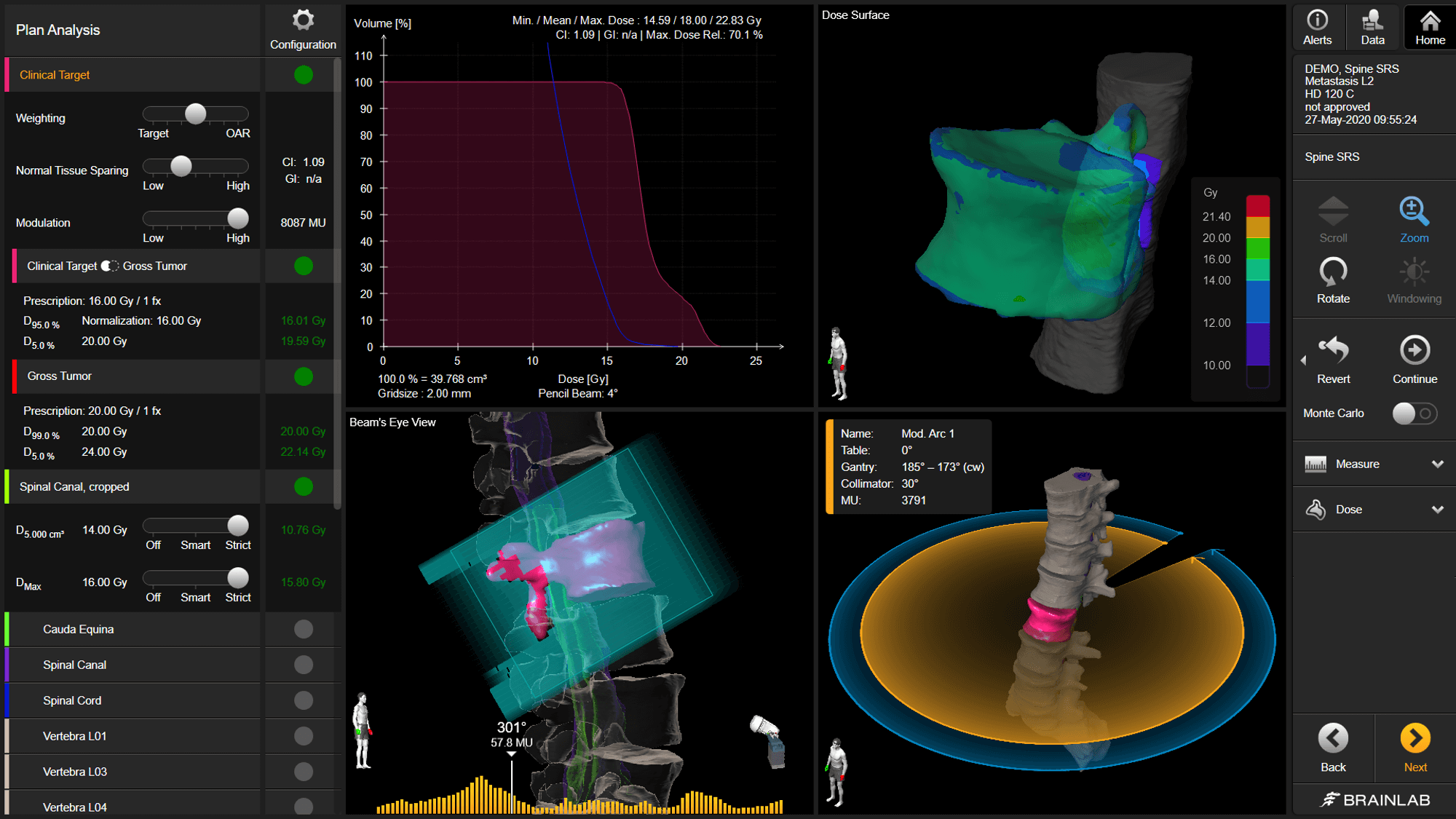Spine metastases workflow
Spare the Spinal Cord with Steep Dose Falloff
Opt for automation to support spinal cord sparing
This automation-supported workflow is optimized for the treatment of spinal metastases and produces very steep dose falloff between the target and the spinal cord. The workflow ensures enhanced spinal cord sparing and offers automatic CTV and OAR proposals in line with the International Spine Consortium Guidelines.
Demo Spine SRS in three minutes
Preparing for spine metastases planning
We’ve built automation into every step of the pre-planning workflow including anatomical mapping, curvature correction and target definition. Save time with fast and easy-to-use tools, add consistency and gain confidence from the submillimetric accuracy you’ll achieve along the way.
Compensating for spine curvature variations
Variations in the position of the patient in different scans can prevent accurate image fusion. The unique algorithm of Elements Spine Curvature Correction combines information from the Brainlab internal tissue classification to account for rigidity and deformability of different tissue types which is then used to highlight and correct deviations in spinal curvatures.
Accurately segmenting spinal anatomy
Curvature corrected, fused images are essential to establishing a solid foundation for segmentation. Automatic segmentation of spinal anatomy with Elements Anatomical Mapping uses our patented synthetic tissue model to identify and label the individual levels of the spine. Easy metal implant contouring and the use of material-specific electron density enable highly accurate Pencil Beam and Monte Carlo dose calculation 1. This software fundamentally streamlines extracranial treatment planning and supports standardization.
Delineating spine metastases
The fused and segmented image can now be used as the basis of spine metastases delineation. Elements SmartBrush Spine SRS provides spinal tumor outlining tools for GTV contouring and automatically proposes the corresponding CTV and the cropped spinal canal object based on International Consortium Guidelines.
AI-powered extra-cranial segmentation
Extracranial organs at risk can be easily segmented based on the seamless integration of AI contouring solutions powered by Therapanacea, that offer automatic, reliable, and fast delineation of more than 200 structures, including the lymph nodes. Following consensus guidelines for standardized and consistent contouring, these solutions enhance time management and inter-clinician variability, improving treatment plan efficiency.
Creating the dose plan with Elements Spine SRS
Elements Spine SRS software is an automation-supported treatment planning software, optimized for the creation of high-quality spine metastases dose plans.
High-quality VMAT planning designed for spine radiosurgery
This automatic spinal VMAT algorithm can achieve superior plans in terms of gradient index for better dose fall-off, conformity index and spinal cord sparing.
Highly precise beam modeling and dose calculation
By using Brainlab reference beam models, the measurements for the highly accurate Monte Carlo dose calculation algorithm are reduced by 90% for all TrueBeam platforms with HD120 or Millenium MLC with 6MV and 10MV, standard and FFF mode.
Click on the link below to learn more about how the Brainlab Reference Beam Models were developed and validated.
Download white paperConfidently treat your spine patients using Elements and ExacTrac Dynamic®
Brainlab provides a complete end-to-end solution for spine SBRT treatments. This includes Elements software applications that enable clinicians to generate high-quality plans in minutes and ExacTrac Dynamic®, an all-in-one system that performs highly accurate positioning and monitoring of patient anatomy during treatment.
Watch the video below to learn more.
Learn more about our related products
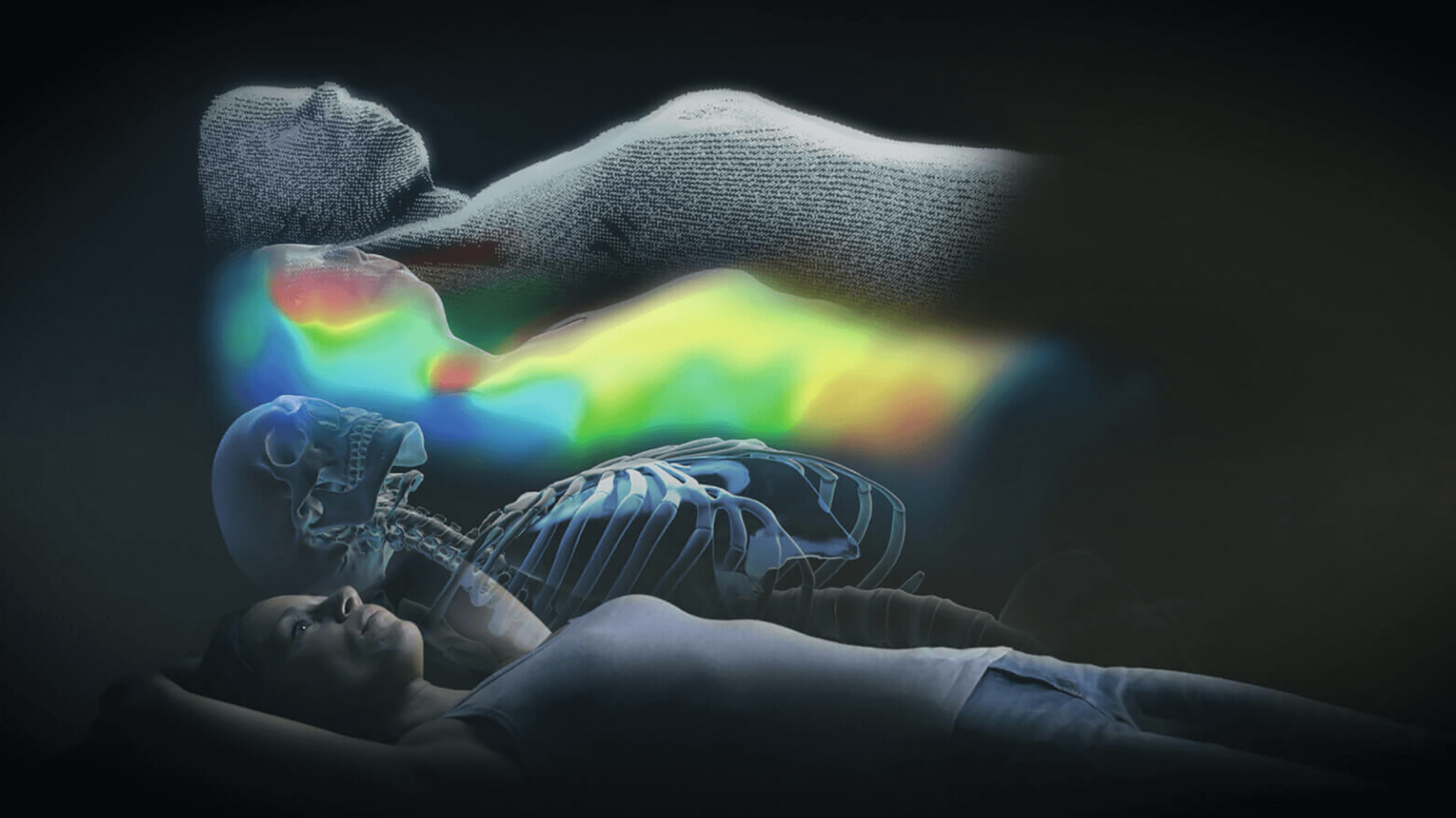
Explore more about the spine metastases workflow

Clinical paper
Trager et al. 2020
Read more about the evaluation of Elements Spine SRS plan quality for SRS and SBRT treatment of spine metastases.
Read more
Clinical literature library
Advancing medical technology through scientific evidence
Brainlab Clinical Affairs conducts advanced research and gathers scientific evidence to help create safe, efficient, cost-effective medical technology.
Visit now
Webinar
Separation Surgery + Radiosurgery for Spine Metastasis Patient
Luke Macyszyn, MD, MA, Tania B. Kaprealian, MD, MBA, and Nzhde Agazaryan, Ph.D., DABR, FAAPM from UCLA Medical Center, Los Angeles, California present their experiences of clinical treatment of metastatic spine disease using a novel surgical approach and radiation techniques. They share the unique perspectives of a surgeon, radiation oncologist and medical physicist and review the options of multidisciplinary treatment planning and more.
Watch now1 Not yet commercially available in several countries. Please contact your sales representative.





